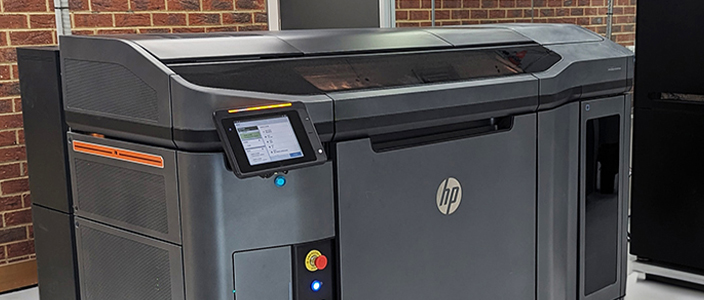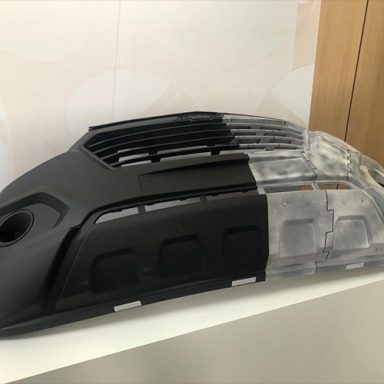Advantages of Additive Manufacturing
March 29, 2023
In recent years, Formero has witnessed a significant trend towards Additive Manufacturing as a preferred method among our customers over traditional manufacturing methods. As a result of this trend, Additive Manufacturing has become a prominent feature of our production-ready goods and services, representing over 44% of our overall production.
For many years, injection moulding has been the go-to manufacturing method for producing plastic parts at scale. However, advances in 3D printing technologies have made it a viable and attractive alternative for many applications.
The shift towards additive manufacturing has been driven by the technology’s many advantages over traditional manufacturing methods, including greater design flexibility, faster prototyping, cost-effectiveness for small production runs, and reduced waste. The additive manufacturing process allows for the creation of highly complex and intricate parts that are not easily produced through traditional methods such as injection moulding or CNC machining. This ability to create highly customised parts in a cost-effective manner has led to its increasing popularity among our customers.
Furthermore, the speed and efficiency of additive manufacturing have proven to be highly valuable in accelerating product development timelines, allowing customers to get their products to market faster. In addition, additive manufacturing has proven to be a greener and more sustainable manufacturing option, as it reduces material waste and consumes less energy compared to traditional methods.
As a leading provider of manufacturing services, Formero has embraced this trend towards additive manufacturing and has invested heavily in state-of-the-art 3D printing technologies, enabling us to offer a comprehensive range of additive manufacturing services to our customers. We are proud to have been at the forefront of this transformational shift in manufacturing and look forward to continuing to provide our customers with innovative and cost-effective manufacturing solutions.
In this practical real-world example, the decision to opt for additive manufacturing over traditional methods, such as producing expensive tooling and injection moulding, was clear. This choice was made by a long-term Formero customer, based on the many benefits that additive manufacturing offers.
Injection Moulded Parts
| Item | Qty | Cost | Lead Time (workdays) |
| 2-cavity injection Mould Tool | 1 | $4,000 | 30 |
| Injection Mould Parts in Nylon | 1,000 | $2,200 | 5 |
| Freight | 1 | $355 | 5 |
| Total | $6,555 | 40 |
Additive Manufacturing
| Item | Qty | Cost | Lead Time (workdays) |
| Selective Laser Sintered Nylon Parts | 1,000 | $2,980 | 4 |
| Freight | 1 | $45 | 2 |
| Total | $3,025 | 6 |
Additive Manufacturing benefits:
- Greater design flexibility: 3D Printing allows for the creation of complex designs and intricate shapes that would be difficult or impossible to achieve using traditional manufacturing techniques. This is because 3D Printing builds objects layer by layer, which enables designers to create complex geometries with greater ease.
- Faster: With Additive Manufacturing, designers can quickly produce their designs without the need for expensive tooling or moulds leading to production ready products in days rather than weeks or months.
- Cost-effective for small to medium production runs: Traditional manufacturing methods often require significant setup costs, such as tooling and moulds. Additive Manufacturing, on the other hand, can be cost-effective for small production runs as there is no need for tooling or moulds.
- Reduced waste: Traditional manufacturing processes often generate a significant amount of waste material. Additive Manufacturing, however, is an additive process that only uses the exact amount of material needed to create the object, which can help to reduce waste.
- On-demand production: With Additive Manufacturing, objects can be produced on-demand, which can help to reduce inventory costs and improve supply chain efficiency. This is particularly useful for products that have a high degree of customization or that need to be produced in small quantities.
- Faster Prototyping: With Additive Manufacturing, designers can quickly produce prototypes of their designs without the need for expensive tooling or moulds. This allows for faster iteration and testing, which can help to speed up the product development process.
- Local Production: 3D printing can be done locally, which can reduce shipping costs and lead times. This can be particularly beneficial for companies that need to produce parts or products quickly and cost-effectively.
Author
Craig Alexander
Craig is a seasoned marketing professional with over 13 years of diverse experience in industries ranging from Asphalt Testing Technology to Environmental Sciences. His extensive background in B2B marketing, coupled with a deep understanding of complex technical fields like Power Tools, Solar & Battery Systems, and Emergency Lighting, uniquely positions him to bridge the gap between advanced manufacturing technologies and market needs. Craig leverages his comprehensive marketing skills to translate intricate manufacturing processes and innovations into clear, compelling narratives, helping businesses of all sizes succeed in both local and international markets.





